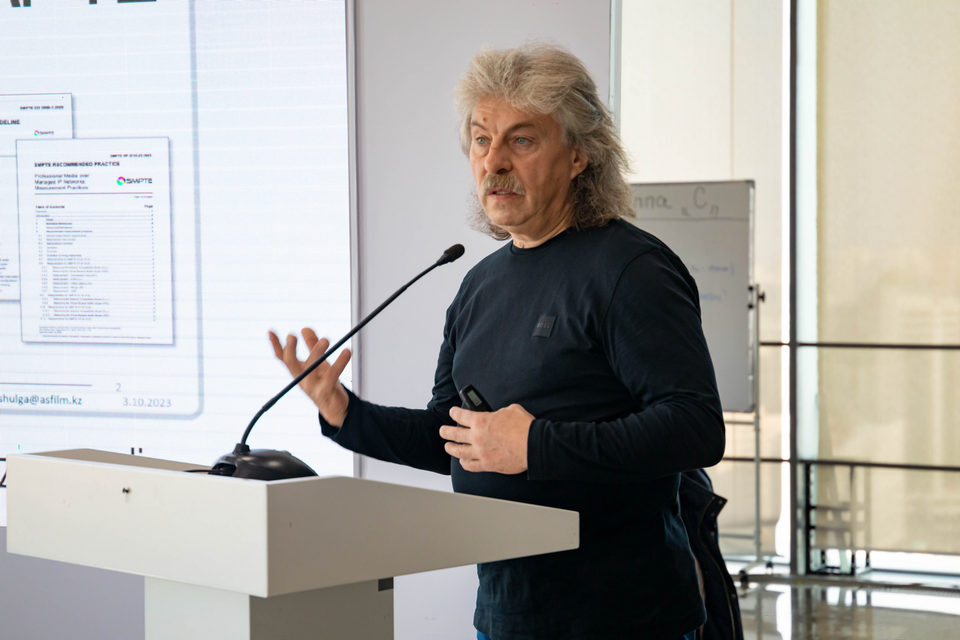Oleg Berezin, Member of the Board of Directors of the European Digital Cinema Forum, in the TKT1957 survey «The year 2030: AI or engineer?».
- How will the broadcasting industry and broadcast technologies change in the next 5 years?
- If we model the world of broadcasting and broadcast tech in 2030, what role will AI play?
- How will AI change your business segment?
- Which professions will AI displace in the broadcasting technology industry by 2030?
- We are heading towards a complete shift to IP, the development of cloud media services, and the transition from hardware solutions to software-based ones. However, hardware solutions for energy-intensive processes and those requiring high-precision synchronization will undoubtedly remain. It is evident that the technologies of professional TV, film production, and the broader AV services market will merge into generalized technologies for the production, transmission, playback, and consumption of media. Towards the end of this five-year period, an interesting transition to object-based media will begin, where content consists of digital objects. The essence of reproducing such media will be the combination of these digital objects (naturally, not randomly but according to the author’s intent) into personalized and adapted audiovisual content.
What do I mean by “digital objects”? These are sound and visual objects (in English, this is known as Object-Based Media).
In audio, it refers to a sound (e.g., the buzzing of a fly, a dialogue, a noise, music, or the specific sound of a particular instrument in the music, etc.), to which we can assign not only volume but also a position in a specific point in space in any coordinates.
Or a visual element, which can be a real or generated object that we place at any desired point in the frame space during playback. The audio soundtrack and image we hear and see at the moment of content consumption are the result of combining these objects in a certain way.
- AI will increasingly penetrate all aspects of media production and broadcasting each year. It is clear that AI will not replace the conception of audiovisual content but will become an important tool for creating, transmitting (broadcasting), and reproducing media content. In certain stages of the content lifecycle, AI will play a dominant role: compression, adaptation of content to consumption conditions, perception quality assessment, search, graphic and musical design of programs, and so on.
- If only AI were the only thing changing our business segment! The key is not to worry that AI will replace humans but to learn how to use AI as a tool. In the field of content localization, where one of my companies operates, automated content localization technologies will obviously develop. This primarily concerns two segments: cheap mass content—soap operas and shows—and niche content aimed at a very narrow but not very demanding audience. However, in the premium content localization market, AI is more likely to be an assistant and tool rather than a dominant technology, at least in the next five years. So, we study, understand, implement, but do not panic!
- First and foremost, I am convinced that AI will not replace humans! But a specialist will be replaced by another specialist who knows how to use AI tools. It is obvious that all routine operations that do not require “intelligence and ingenuity” will gradually be replaced by AI-based systems—this will primarily affect operators and engineers who control the operation of media systems—where AI-based automation is undeniable.
All the opinions of industry leaders can be seen in the survey “Year 2030: AI or Engineer?”.










